England v South Africa: What previous meetings can tell us about this weekend’s Rugby World Cup final
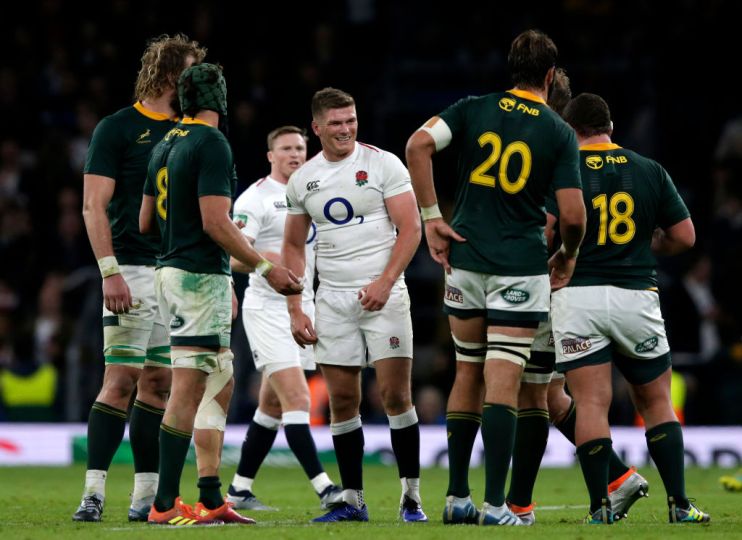
When pondering England’s Rugby World Cup final against South Africa on Saturday there is one obvious point of reference to consider.
The two teams met in the 2007 tournament showpiece in Paris, where the Springboks kicked five penalties to England’s two in a 15-6 win remembered for Mark Cueto’s disallowed try.
But whether Cueto’s foot was marginally in touch before he grounded the ball in the 42nd minute isn’t particularly relevant to the events in Yokohama Stadium this weekend.
Read more: Ben Spencer’s call-up raises the stakes for Eddie Jones
By contrast, the most recent meetings between the two sides can offer some insight into the contest in prospect this weekend in Yokohama.
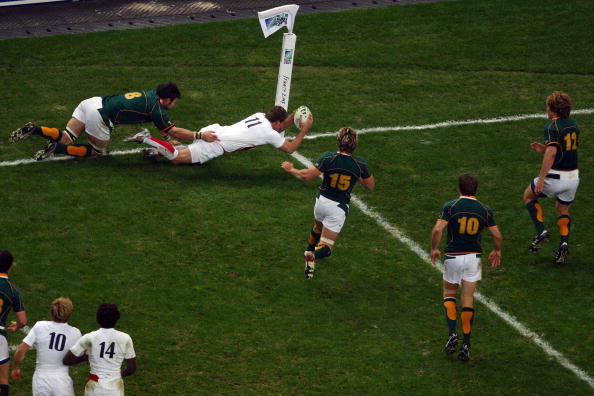
When England travelled to South Africa for their three-Test series in June 2018, both teams were at a crossroads.
The hosts were beginning a new era under head coach Rassie Erasmus, while the visitors were desperate to bounce back following a chastening Six Nations in which they had lost to Scotland, France and Ireland, finishing fifth.
First-hand experience
Just over a year out from the World Cup, the summer of 2018 was a time for Erasmus and England’s Eddie Jones to rebuild, settle on personnel and establish an identity. It was a period of flux but, given that they have both now led their teams to the final, it clearly served a purpose.
South Africa won the first two Tests at Johannesburg and Bloemfontein to secure the series before England ended a six-match losing streak by winning the last in Cape Town. They subsequently met once more in an autumn international at Twickenham in November, where Jones’s side edged a close contest 12-11 to make it 2-2 over the four matches.
The majority of the players involved in those four matches – 47 of the 60 starters – remain important parts of Jones’s squad now, while the core of South Africa’s team has also been retained by Erasmus.
In this age of in-depth analysis, players are hardly going to be in the dark about their opponents ahead of the biggest game of their careers, but the recent sparring between the sides means they also have first-hand experience to draw upon.
De Klerk’s importance
His man-of-the-match performance in the quarter-final win over Japan and crucial role in the semi-final defeat of Wales means Faf de Klerk is far from hidden. The fact South Africa’s most influential player also plies his trade in the Premiership doesn’t help him stay under the radar.
De Klerk, of Sale Sharks, has his hand firmly on the rudder of the Springbok ship at all times. The 5ft 7in scrum-half was on the comeback trail last summer, having spent two years out of the side.
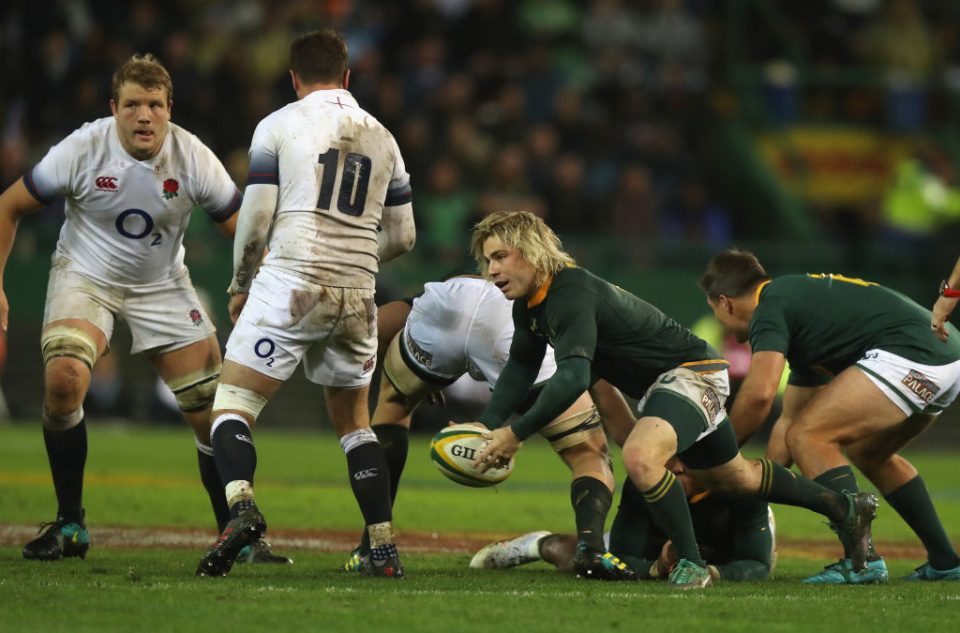
Recalled by Erasmus, he immediately set about showing his qualities – namely a phenomenal engine, quick thinking, rapid ball distribution and signature box-kick.
It was he who instigated South Africa’s fightback from 24-3 down in the first Test, sniping around a ruck to touch down, and it was his instincts which set up the move from which winger S’busiso Nkosi scored the second try.
The No9, who Sale team-mate Ben Curry says “you hear before you see” is far from their only weapon, however.
The first Test, which finished 42-39, was also notable for Willie Le Roux’s class on the ball. The full-back, then playing for Wasps, fizzed a flat pass into Nkosi for another score before displaying his speed and upper-body strength to fend off tacklers and put his side ahead at half-time.
Power in open play
The second Test didn’t contain as many tries and it was other players and qualities which saw the Springboks home 23-12.
Experienced prop Tendai Mtawarira – affectionately known as The Beast” – showed his power in open play, but it was No8 Duane Vermeulen who did the most damage, producing a nimble step before rumbling over as England squandered a 12-0 lead.
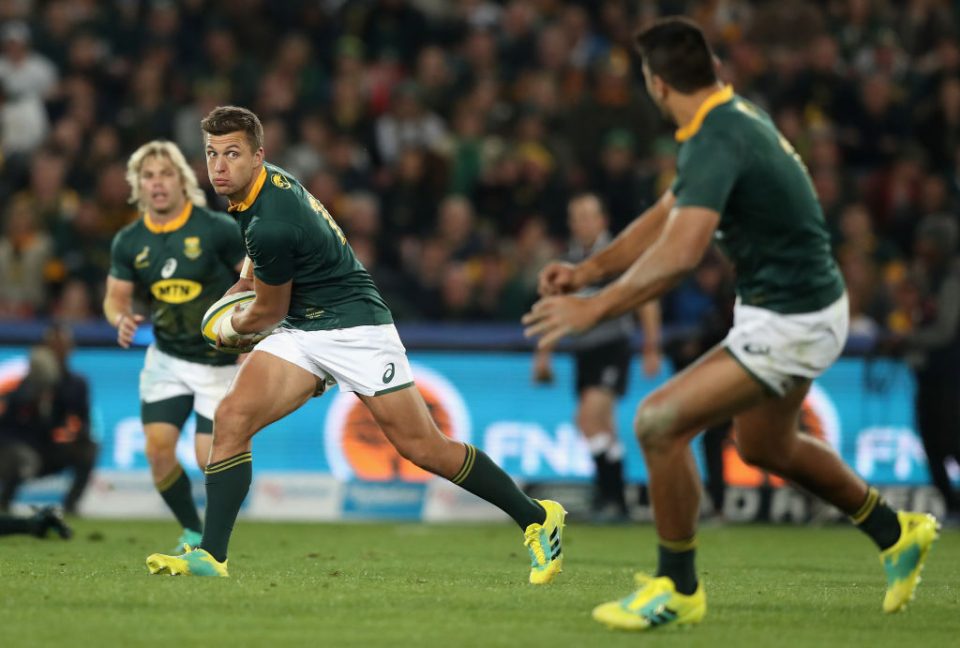
Vermeulen continued to wreak havoc as England conceded three penalties – two from rucks and one at the line-out – which fly-half Handre Pollard slotted over from all distances and angles. Meanwhile, power from the bench in the form of prop Steven Kitshoff forced opposite number Kyle Sinckler to stand up and England to concede a penalty try.
This toughness and focus on physical prowess is what has defined South Africa at the World Cup and, just as it has done for Japan and Wales, it proved effective against England last year. Erasmus has vowed to stick to what they’re good at, so Eddie Jones will expect another battle.
Deadly May
Even while in the depths of a drastic dip in form, England did not allow South Africa to have things their own way on the tour. The visitors led in all three games and it was their defence, rather than their attack, which was deficient.
One man in particular has the attributes to cause the Springboks damage. Jonny May scored in all three matches, with his pace deadly when any space was offered to motor into.
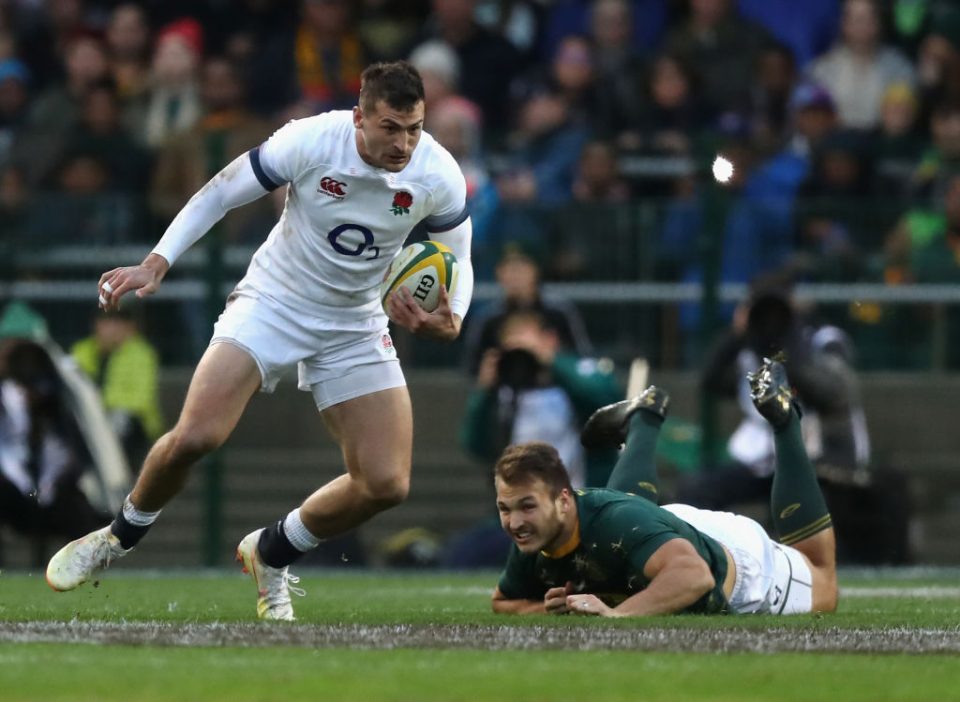
When England moved the ball swiftly across the line, the likes of George Ford and Elliot Daly created openings for their dangerous winger time and again, while May himself also assisted two scores for others.
May is England’s joint highest try-scorer at the World Cup with three, and although South Africa won’t be short of pace themselves with Cheslin Kolbe back from injury, the Leicester winger will surely back himself to make the most of any openings down the flanks.
Read more: Why England shouldn’t fear South Africa’s game plan
The fact that England’s two wins over South Africa – 25-10 in the final summer Test and 12-11 at Twickenham in the autumn – owed much to their discipline and ability to grind out ugly points rather than flair won’t be lost on Jones either.
It was on the tour of South Africa that England’s current first-choice front row of Sinckler, Jamie George and Mako Vunipola established themselves and where Tom Curry’s star rose. They are all now battle-hardened.
Both sides have come a long way since their most recent encounters, and yet both have reasons to take the confidence gleaned from those experiences into the Yokohama Stadium this weekend.
Main image credit: Getty Images